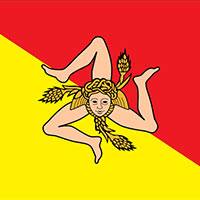The Romans in Sicily
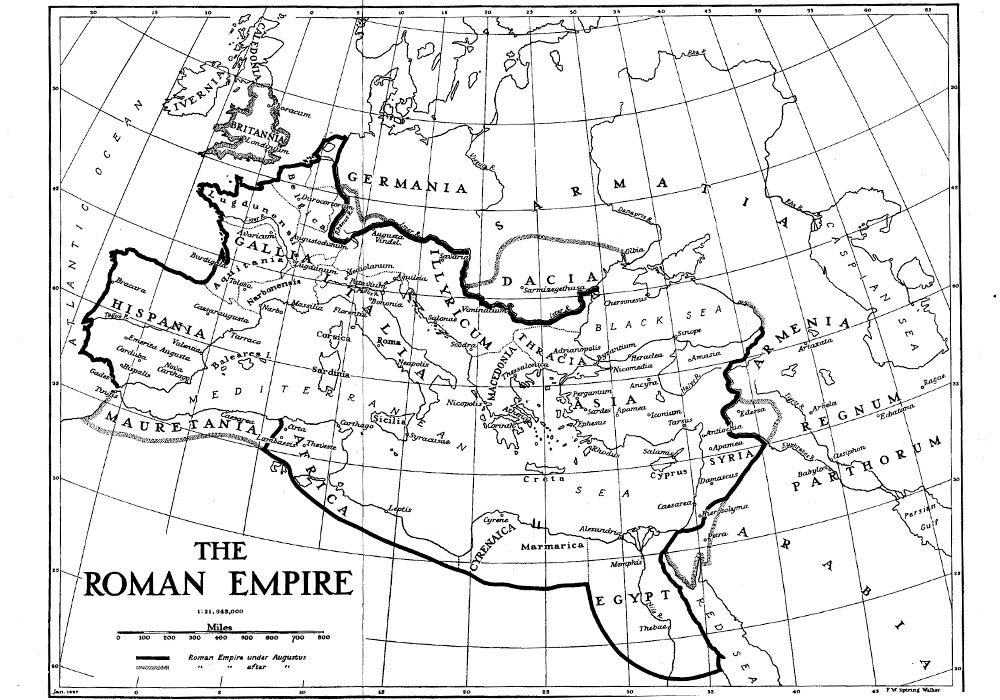
Sicily, according to Cato, was "the nurse at whose breast the Roman people is fed". Sicily proved to be vital to Rome for a steady supply of grain.
In 264 Rome attacked the Carthaginian in what was to become the First Punic War (264-241 BC)
In 212 BC the last independent state Syracuse was defeated by the Romans
In the middle of the 5th century the Vandals started raiding the coastal towns of Sicily. About 50 years later they took control of the whole island. In 535 BC Sicily became part of the Byzantine empire.
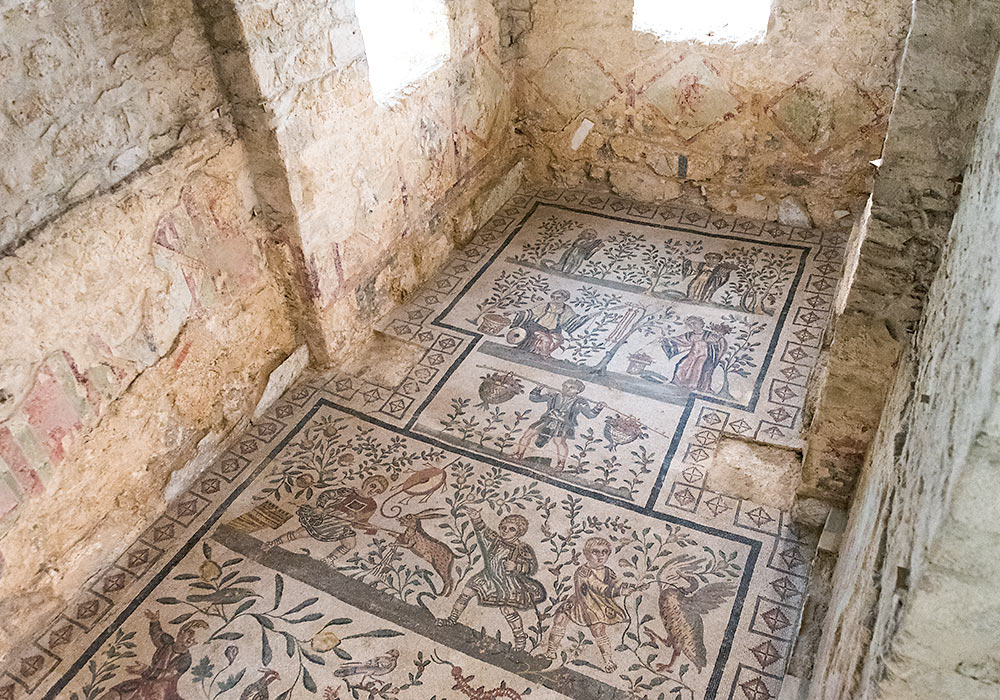
Mosaic floor in Villa Romana del Casale, Piazza Armerina.
Cicero on Sicily
“Of all foreign nations Sicily was the first who joined herself to the friendship and alliance of the Roman people. She was the first to be called a province; and the provinces are a great ornament to the empire. She was the first who taught our ancestors how glorious a thing it was to rule over foreign nations. She alone has displayed such good faith and such good will towards the Roman people, that the states of that island which have once come into our alliance have never revolted afterwards, but many of them, and those the most illustrious of them, have remained firm to our friendship for ever.”
Cicero, Marcus Tullius. Cicero: Against Verres in Latin + English (SPQR Study Guides Book 4) . Paul Hudson. Kindle Edition.
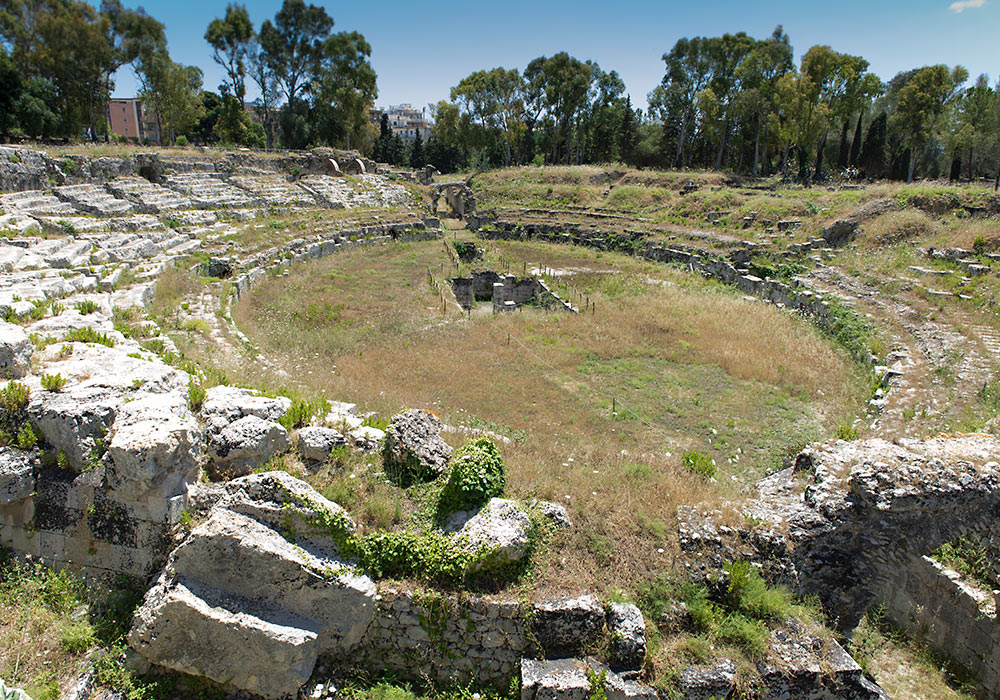
The Roman amphitheatre in Siracusa (140m by 119m). It was used by gladiator fights with wild beasts. The rectangular depression was probably for the machinery used in the spectacles.
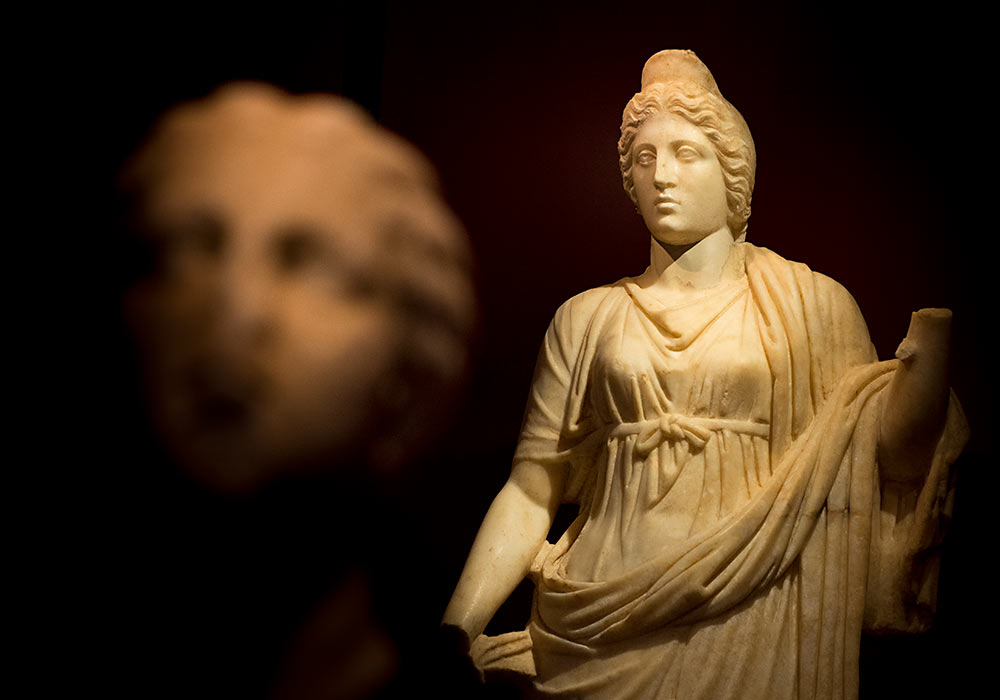
Statue of Ceres, in the Antiquarium at Halaesa on the north coast of Sicily, some 23 km from Cefalù. Ceres was the goddess of agriculture, grain crops, fertility and motherly relationships and patron of Sicily. Ceres, in Roman mythology, was equivalent to the Greek Demeter.
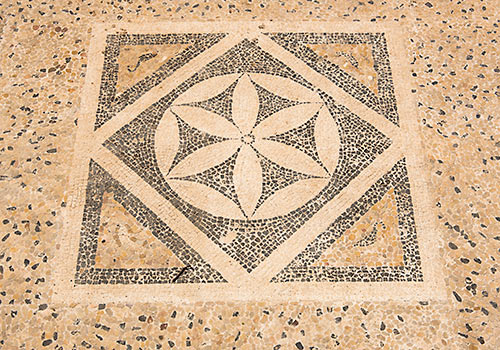
Mosaic on pavement from the Roman period, 2nd century BC. Information from Parco Archeologico di Naxos: "The pavement combines polychrome (yellow, pink, red, grey and black) cut and polished pebbles and relatively large polygonal black and white tesserae; the central geometric panes features a diamond shape inside a large square on which there is a six petaled flower om a black background. Four darting dolphins occupy the triangular shaped corners. The technique and the style date from 2nd century BC with parallels in Athens, Delos and Eretria."
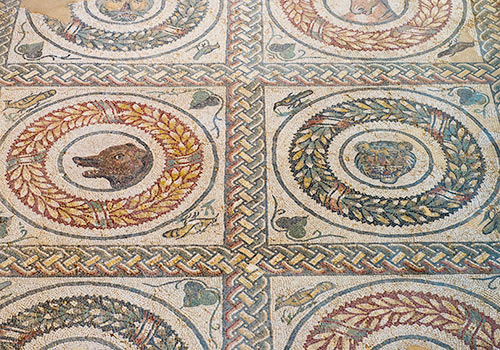
If you are interested in Roman mosaics, the fantastic museum at Villa Romana del Casale, near Piazza Armerina, is the place to go.
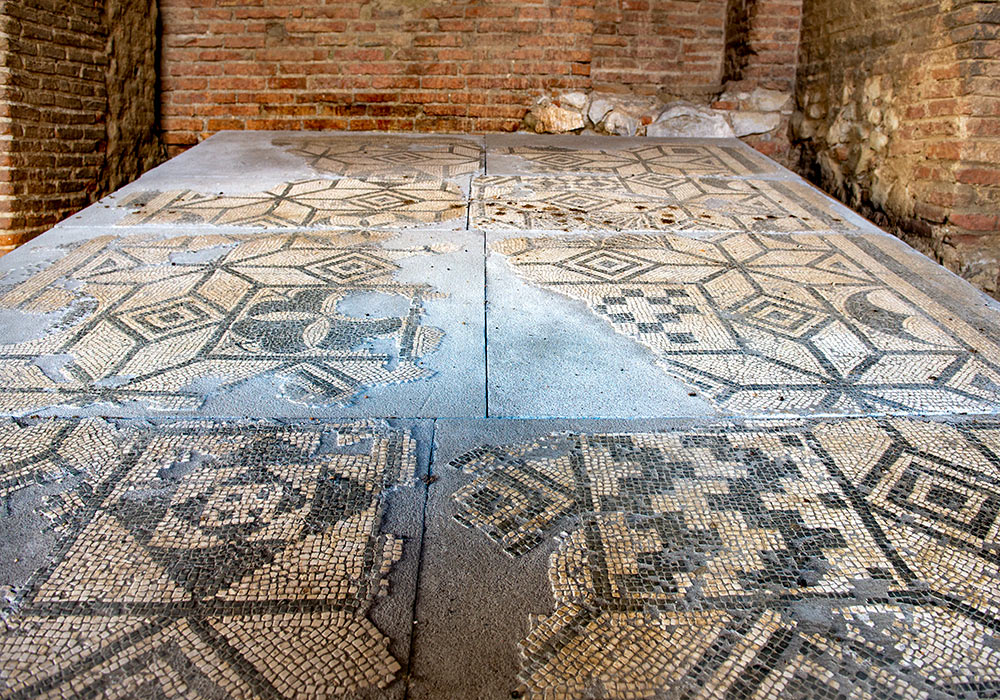
Mosaic floor from via Cappuccini, Taormina. AD C2.
Ancient Rome (3D animation)
Speakers: Dr. Bernard Frischer and Dr. Steven Zucker
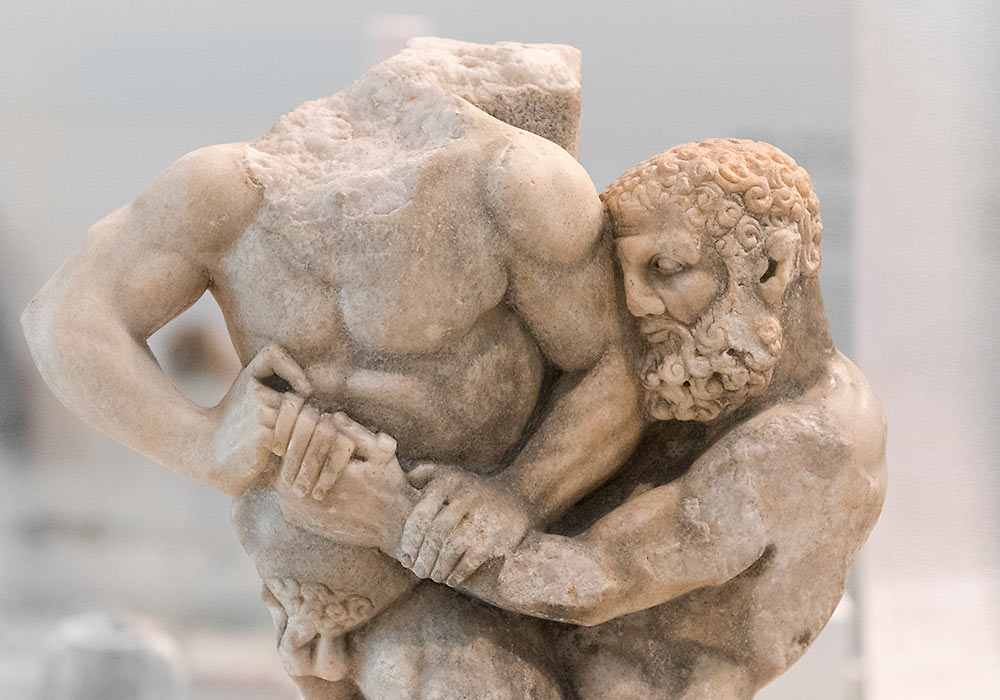
Hercules wrestling with Antaeus. Marble support for table-top. Greek, 200-100 BC. Found off the coast of Catania. Ashmolean Museum / Museo Civico 'Castello Ursino', Catania. The cartibulum was used in grand Roman villas to display the family's silver plate.
Part of the exhibition Storms, War & Shipwrecks - Treasures from the Sicilian Seas at the Ashmolean Museum, June-September 2016.
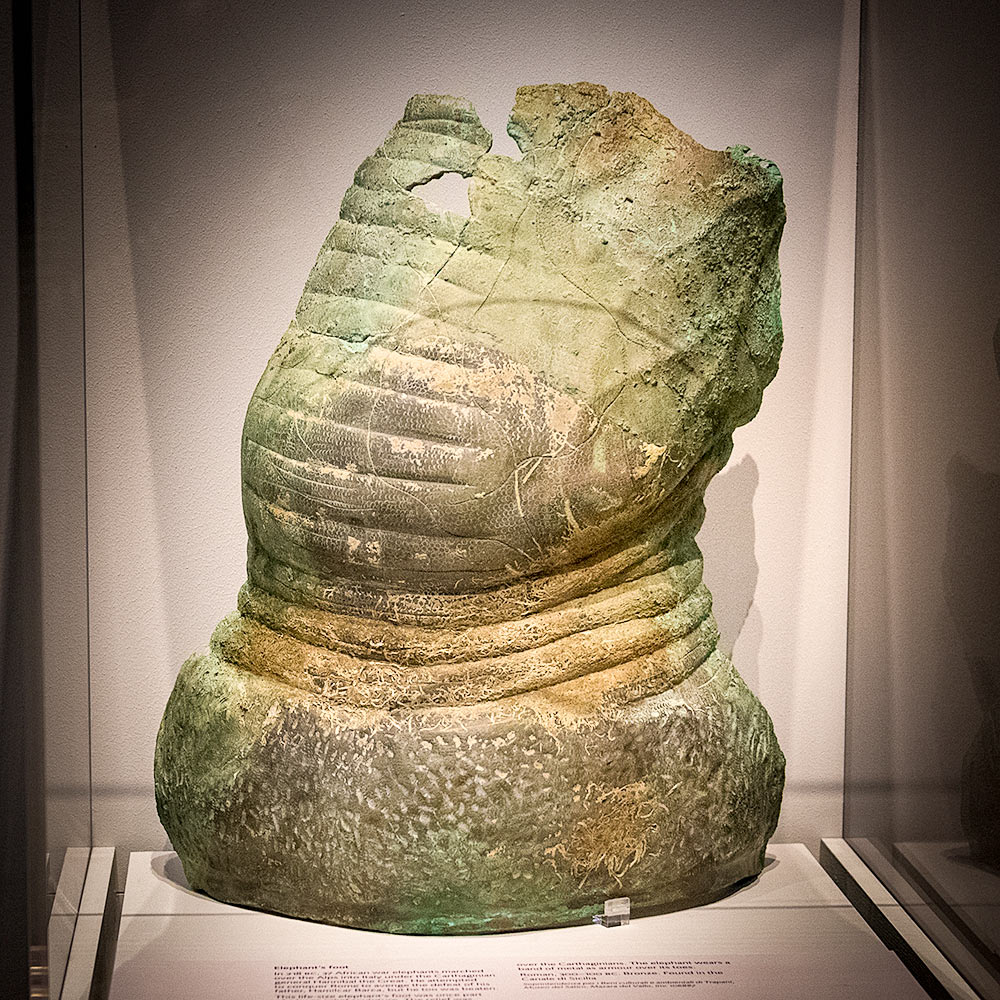
Fragment of a life-size bronze elephant statue, 3rd century BC. Height: 63 cm. On the foot, a patina is visible, caused by the touch of countless hands. This suggests that the bronze elephant must have stood in a public place. According to Rossella Giglio, the technical and decorative characteristics point to a Phoenician-Sicilian, northern-African or Iberian origin - or a workshop in Rome. The foot was found in the Mediterranean Sea between Sicily and Tunisia on 3 July 1999 from the trawler Capitan Ciccio. (Sicily and the Sea, Allard Pierson Museum, 2015)
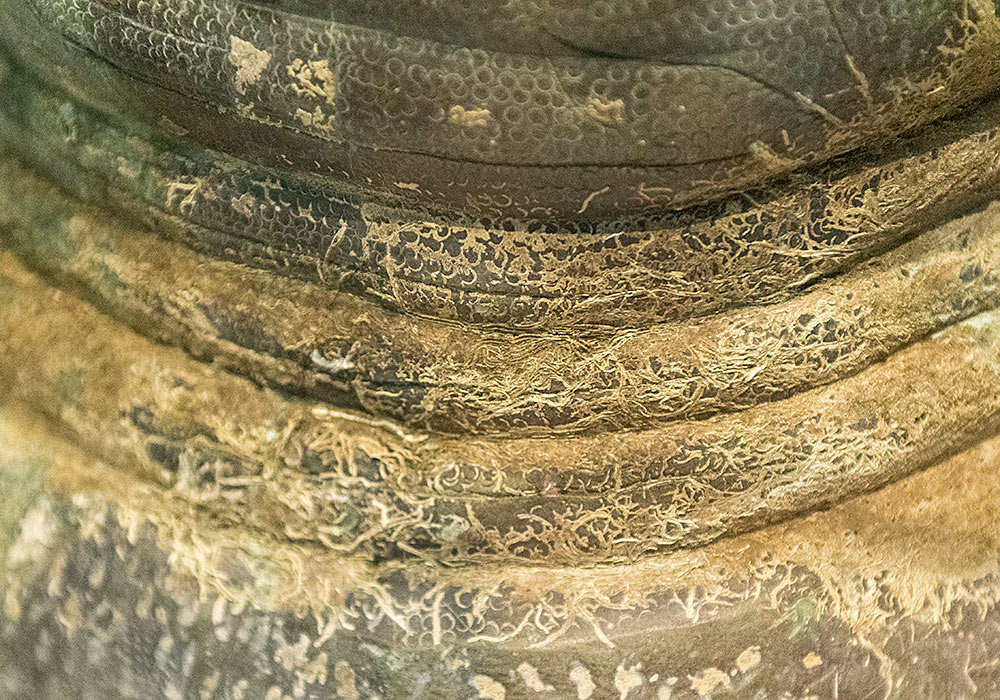
Detail of the bronze elephant foot found in the Mediterranean Sea between Sicily and Tunisia on 3 July 1999.
Click here for an interactive Roman Map
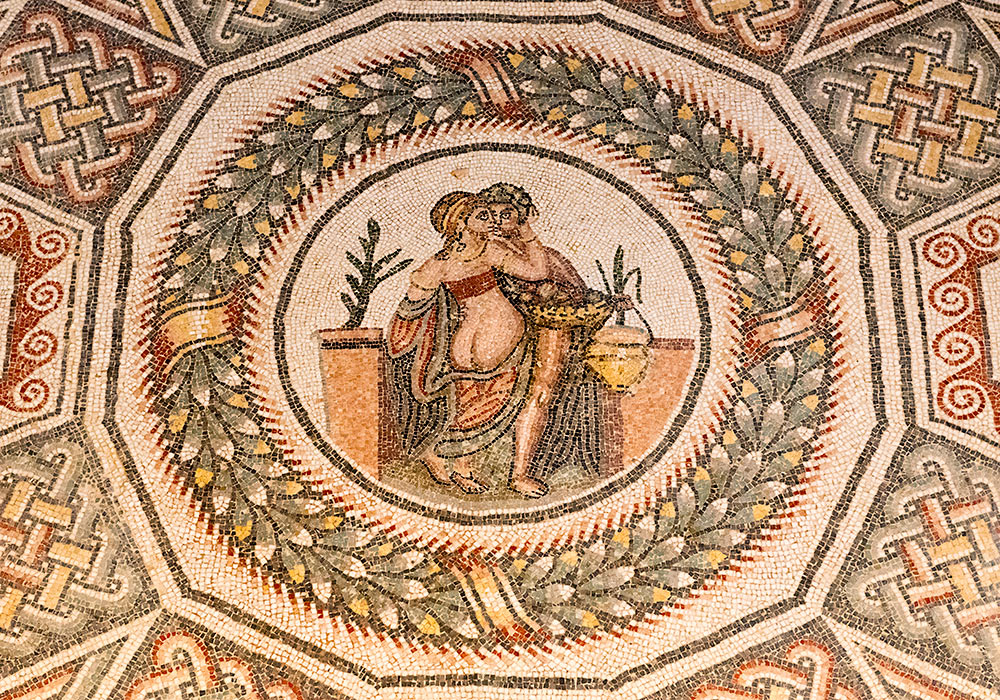
The half-naked lovers in Villa Romana del Casale, Piazza Armerina. The woman's hair is pulled up and she has a Junoesque stature with wide hips, which, according to Giuseppe di Giovanni, shows the Ancient Roman's taste in women at the time. It gave women status to be overweight since it was a way to show off the wealth of the family, the importance of the husband and the prosperity of his business. The man is carrying a basket of fruit.
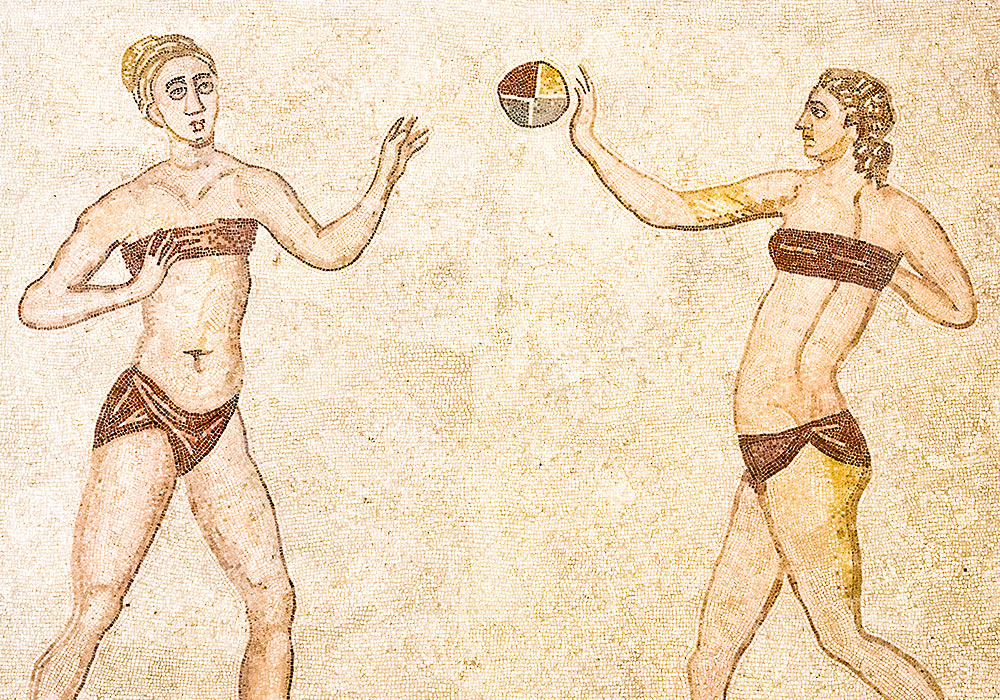
The "Bikini Girls" playing with a coloured ball. They are taking part in an Olympic pentathlon competition. Villa Romana del Casale, Piazza Armerina
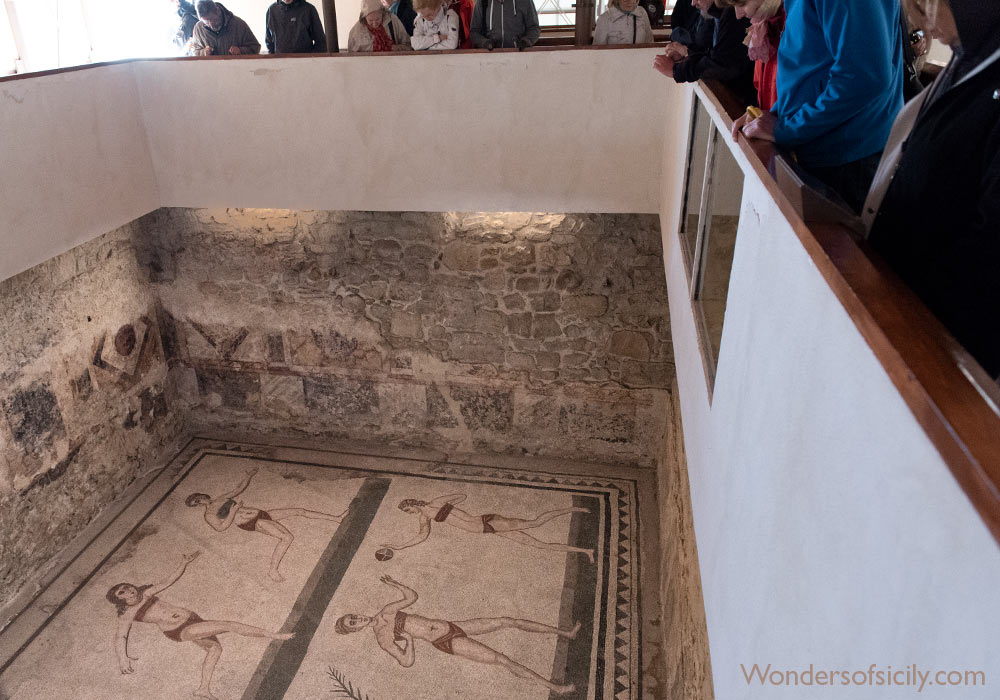
Villa Romana del Casale, Piazza Armerina
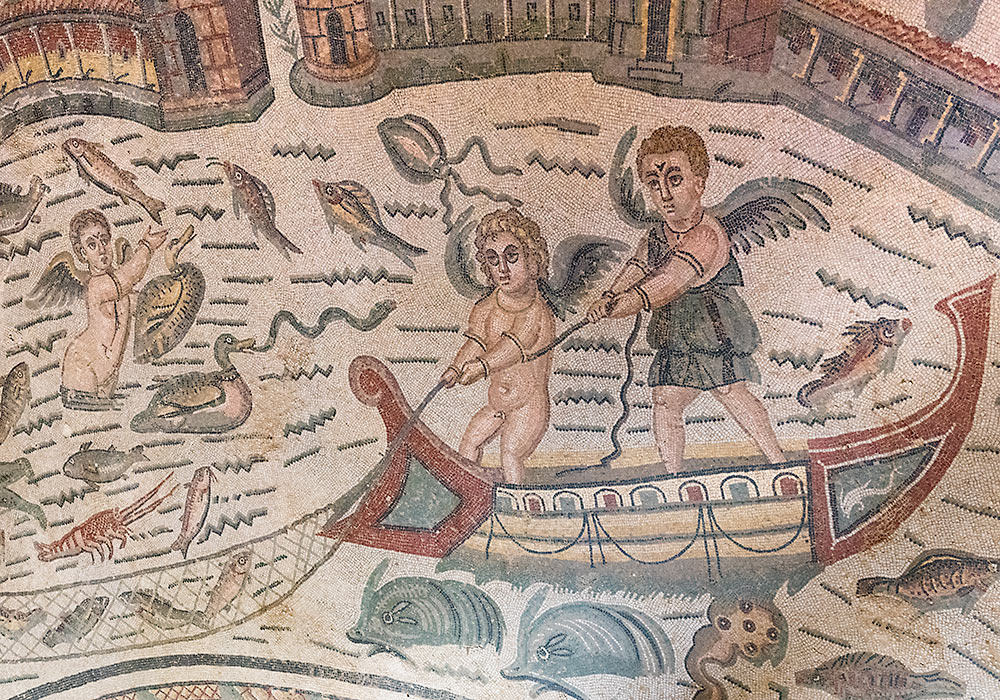
Cupids fishing. Villa Romana del Casale, Piazza Armerina

Mosaic floor in Villa Romana del Casale, Piazza Armerina.
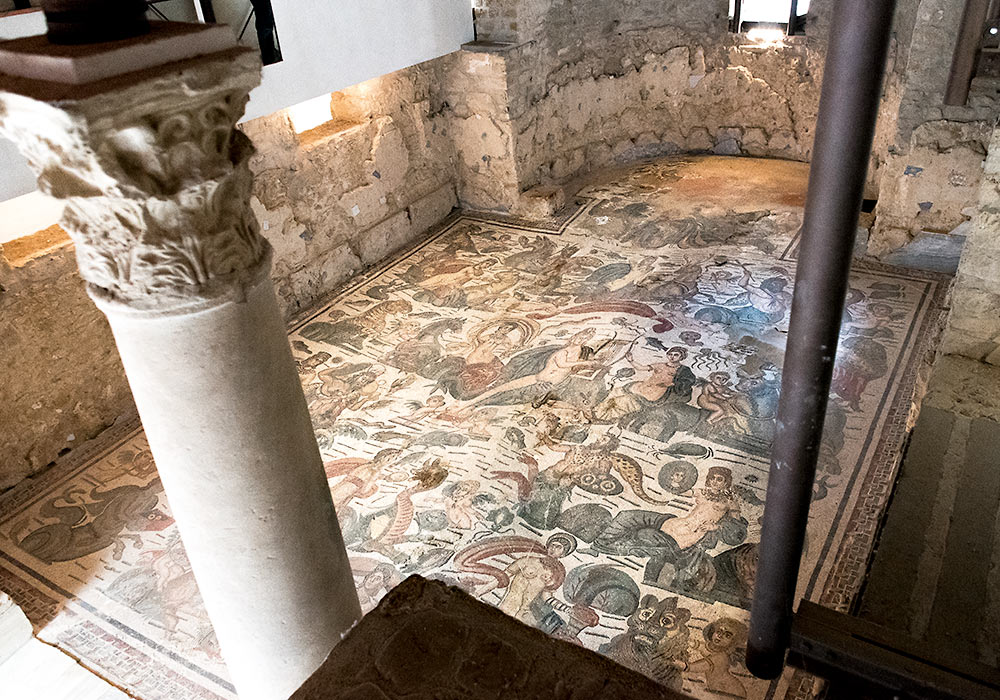
Villa Romana del Casale, Piazza Armerina
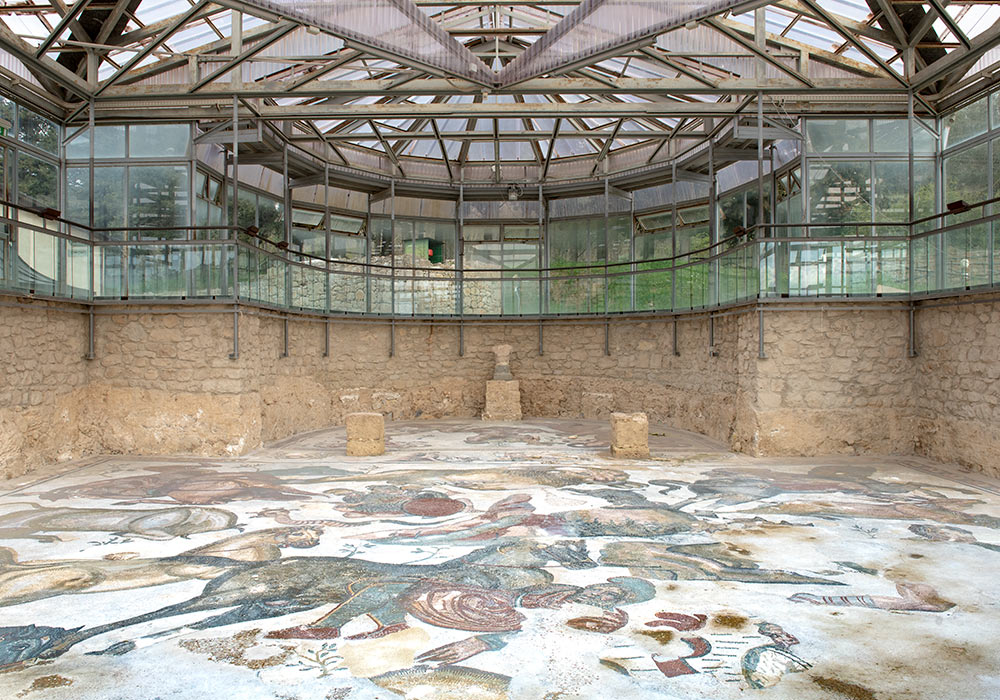
Villa Romana del Casale, Piazza Armerina
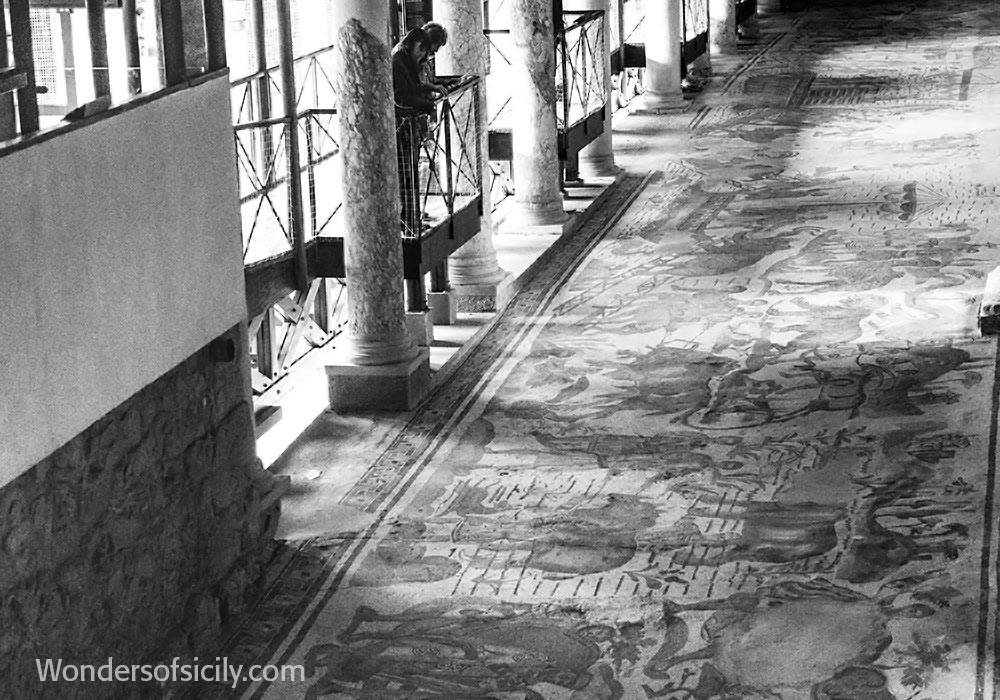
Villa Romana del Casale, Piazza Armerina
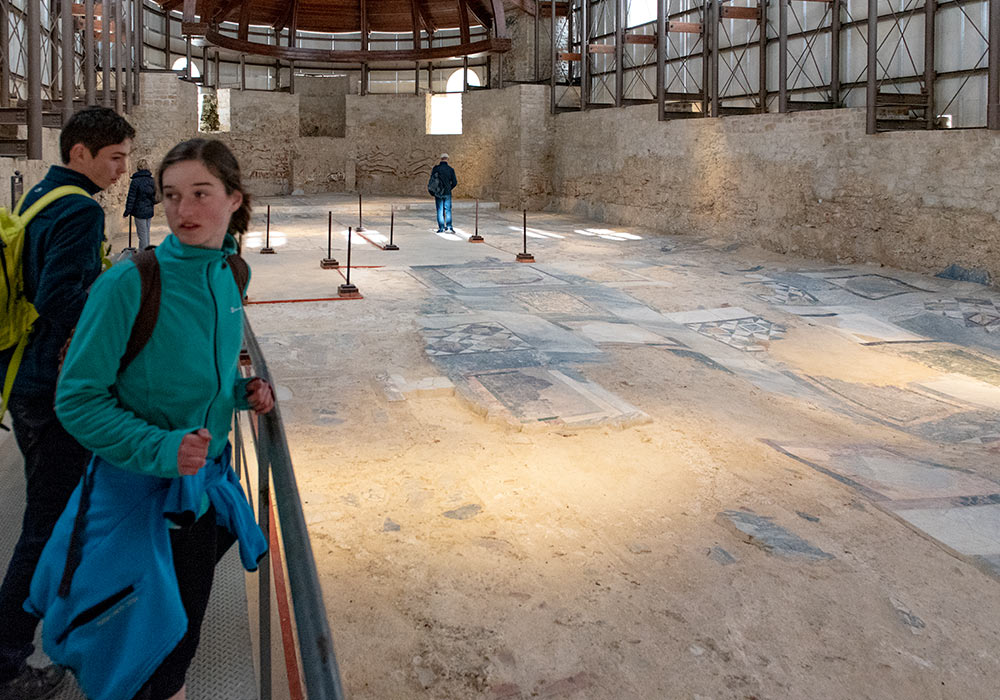
Villa Romana del Casale, Piazza Armerina
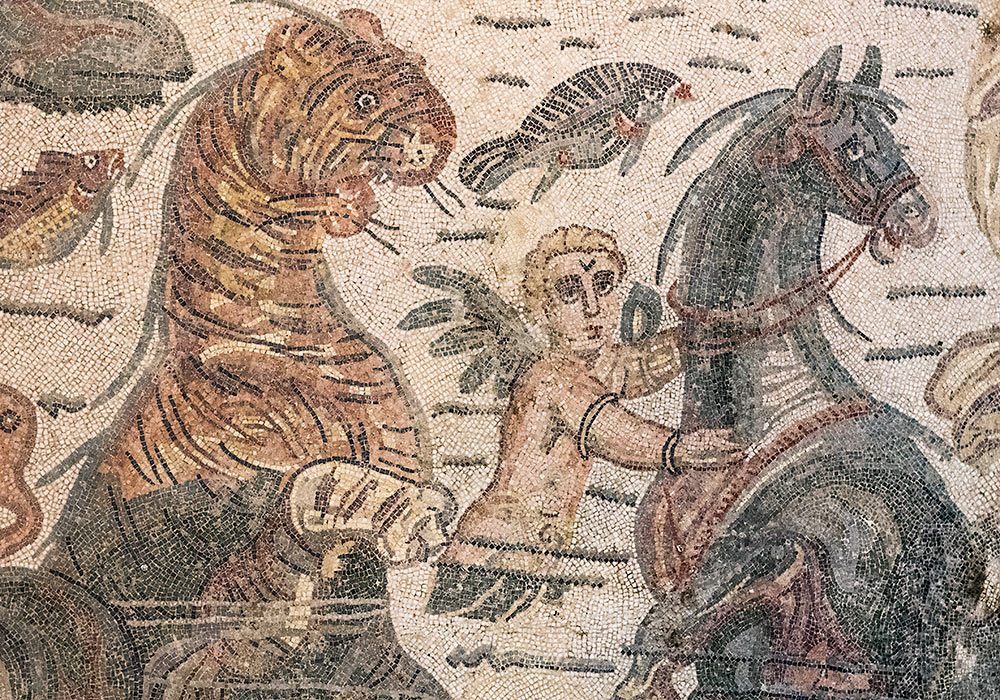
Mosaic floor in Villa Romana del Casale, Piazza Armerina.
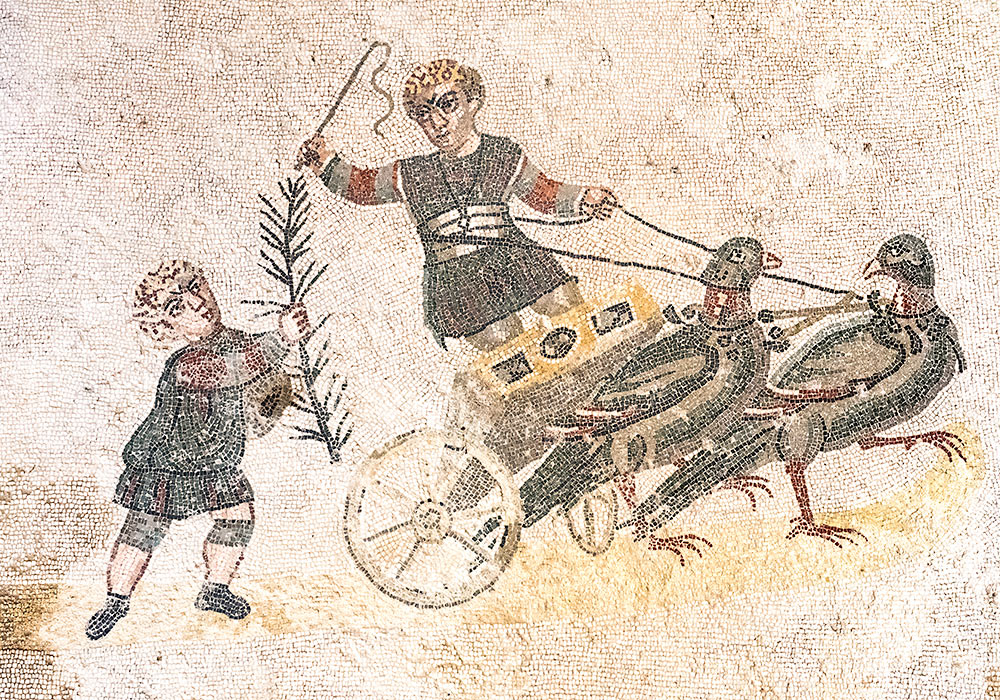
Mosaic decoration in the childrens' room. Villa Romana del Casale, Piazza Armerina
Articles

